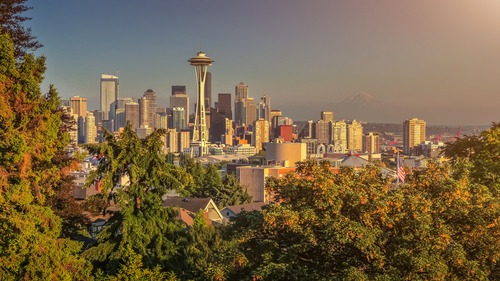
On Friday, the U.S. Department of Transportation’s Federal Transit Administration (FTA) announced it had awarded the Seattle Department of Transportation a $64.2 million construction grant for the city’s bus rapid transit line.
The RapidRide J Line will provide fast, frequent and reliable service between downtown Seattle, the University of Washington and other destinations, officials said. The grant is part of the Bipartisan Infrastructure Law, and comes from the FTA’s Capital Investment Grants (CIG) program to help communities carry out transformational transit projects.
“Americans depend on fast, affordable, and safe transportation options to get to work, pursue their education, and come home every day to their families,” U.S. Transportation Secretary Pete Buttigieg said. “Bus rapid transit is the fastest-growing transit mode for a good reason, and the Biden-Harris administration’s $64.2 million investment will build out Seattle’s RapidRide J Line to provide faster, more efficient service that benefits the greater Seattle area.”
The 52-mile route will upgrade existing King County Metro bus lines by improving reliability with bus-only lanes and transit signal priority, and will have 11 new or improved stations that include shelters, lighting, real-time arrival information and all-door boarding. The improvements are expected to improve reliability and rider connections to Link light rail and other bus lines, as well as provide a new transit option for nearly 50,000 students and 21,000 employees.
“As Seattle continues to grow, the RapidRide J Line will provide speedy service for commuters as well as generations of UW Huskies and area residents still to come,” FTA Administrator Nuria Fernandez said. “BRT routes have been transforming communities across the country with fast, frequent service along key economic corridors, and we are pleased to add Seattle to the growing list of communities benefiting from America’s largest ever investment in high-quality public transportation.”